And Now for something completely different……and very cool!
Paul Wunderlich was a German artist best known for his Surrealist paintings and erotic sculpture, which secured his reputation as one of the most important members of the Magic Realist circle of artists. Wunderlich’s early representational subject matter included recent scenes of Germany’s oppressive history during World War II, but his imagery later turned towards Surrealist-influenced works, featuring sexual imagery and fantastic, floating forms. He was born on March 10, 1927 in Eberswalde, Germany and studied graphic art at the Landeskunstschule in Hamburg before becoming an art teacher there. During that time, he learned printmaking techniques from the well-known artists Emil Nolde and Oskar Kokoschka. Wunderlich also began painting using the free-form, Expressionist style of Tachism, but later abandoned it for more figurative imagery. In 1960, he moved to Paris and lived there for three years while working in the Deskjoberts workshop as a lithographer. From 1951 to 1960, he taught as a professor at the University of Fine Arts in Hamburg and from the 1970s on, his energies turned to sculpture. He lived between Hamburg and France before his death on June 6, 2010, in Provence, France.
Wunderlich was the second child of Horst and Gertrude (née Arendt) Wunderlich. After a time as Flakhelfer and a prisoner of war, he moved to his mother in Eutin, graduated from the Johann Heinrich Voss Gymnasium, and then visited the Palace School of Art in the Orangery of Eutin Castle. In 1947 he became a student at the Landeskunstschule in Hamburg, where he was in the Free Graphics class of William Tietze. His classmates included Horst Janssen and Reinhard Drenkhahn. After a hiatus, Wunderlich began studying again in 1950 with Willem Grimm and graduated in 1951. He then worked as a lecturer at the Hochschule für bildende Künste Hamburg, teaching lithography and etching. Also in 1951 he printed for Emil Nolde (“The King and his men”, etching) and in 1952 for Oskar Kokoschka, the graphics suite “Ann Eliza Reed” of eleven lithographs. With the earnings he spent three months in Ibiza. In 1955 he received a scholarship from the Cultural Committee of German Industry .
After an early, essentially realistic creative period from around 1959, he developed his characteristic style. His early works show a dismembered body, disproportioned in front of an empty background. In the 1960s he was influenced by art movements such as Art Deco and Art Nouveau.
In 1960, the cycle of lithographs “qui s’explique” was seized by the Hamburg prosecutor for indecent depictions. Wunderlich received the 1961 Prize of the Youth for graphics. With the prize money, he moved to Paris. In 1962, he worked in the workshop Deskjoberts in Paris.
In 1963 he returned to Hamburg and as a successor of George Gresko was professor at the Hochschule until 1968. In 1969 he started the creation of bronze sculptures and statues, influenced by Salvador Dalí. In 1976, he issued a limited edition of multicolored heliographs that illustrated James Joyce’s Giacomo Joyce.
Wunderlich had also destroyed some of his art after having spent some time on it. He had looked at it and decided he no longer like it. At another time his art had gotten him in trouble, officials came knocking on his door and ruined years worth of his work for being too strange.
Paul Wunderlich married photographer Karin Székessy in 1971, and the couple pursued art projects together. Fritz J. Raddatz documented and commented.
Wunderlich lived and worked in Hamburg and Saint-Pierre-de-Vassols (Provence).
Wunderlich died in Provence on June 6, 2010 at the age of 83.
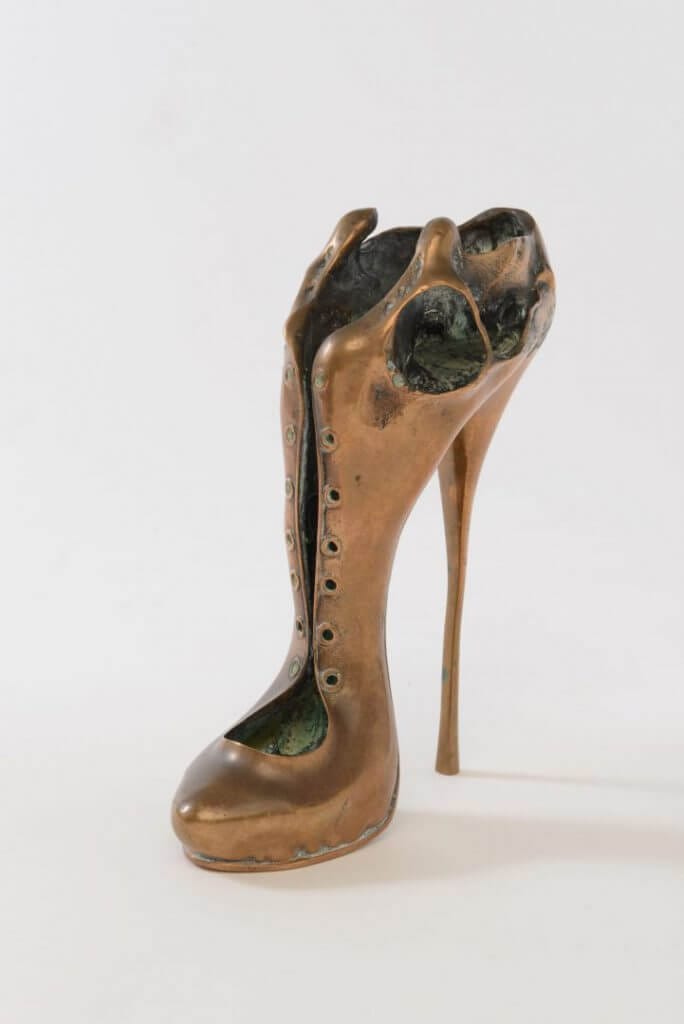
Skull Shoe SCUH (Schadelschuh), 1976BronzeHeight: 8 in. (20.32 cm)
Width: 9 in. (22.86 cm)
Depth: 4 in. (10.16 cm)(Image 1/6)
$ 6,000.00

Skull Shoe SCUH (Schadelschuh), 1976(Image 2/6)
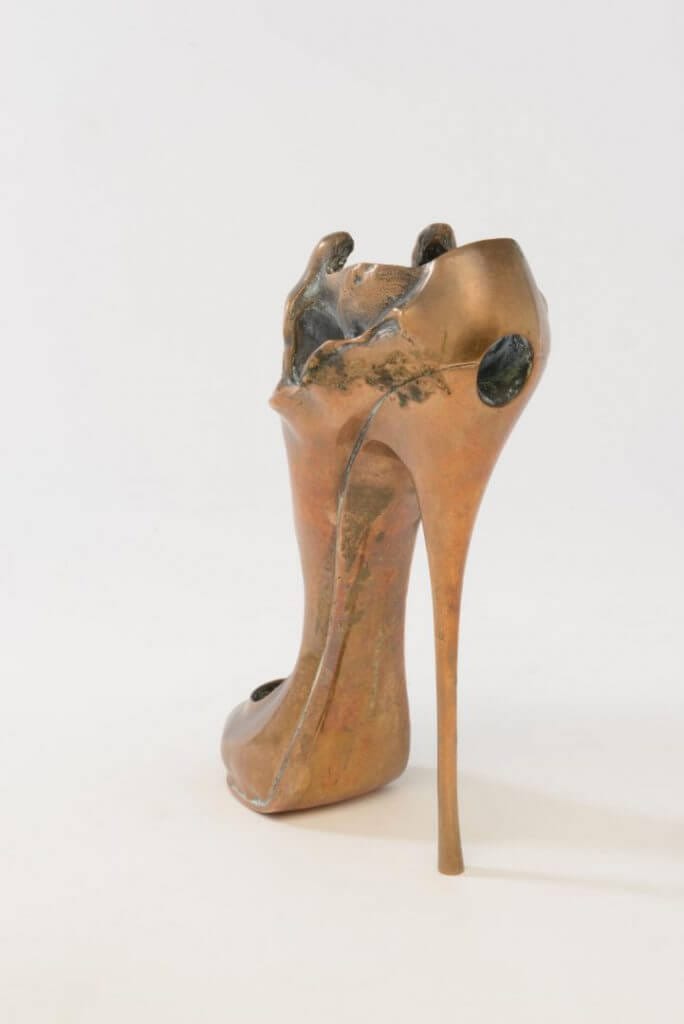
Skull Shoe SCUH (Schadelschuh), 1976(Image 3/6)
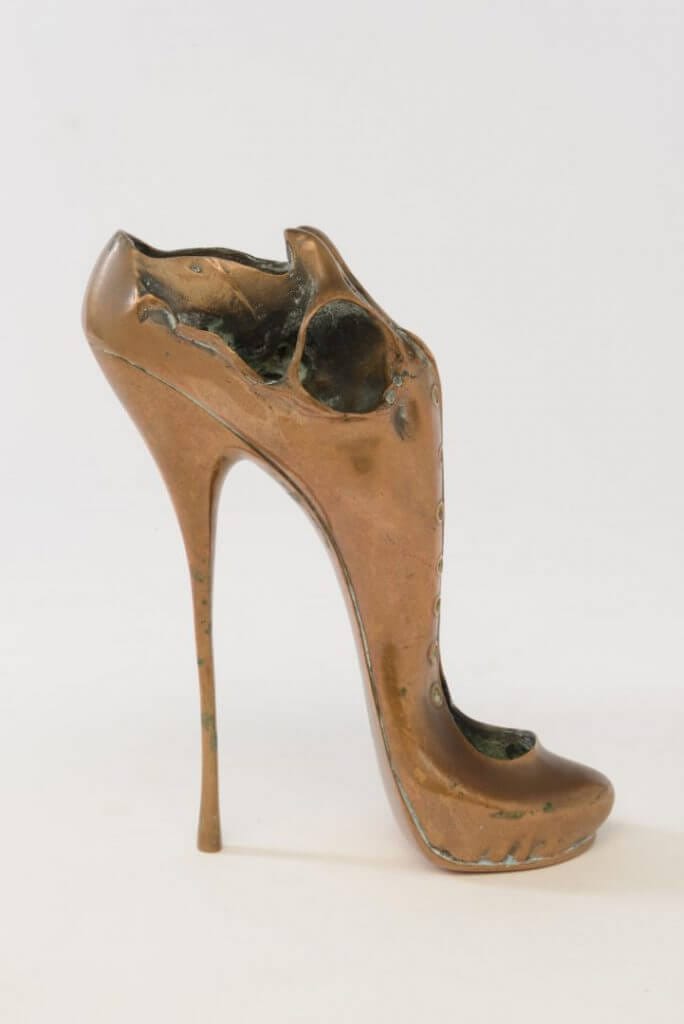
Skull Shoe SCUH (Schadelschuh), 1976(Image 4/6)
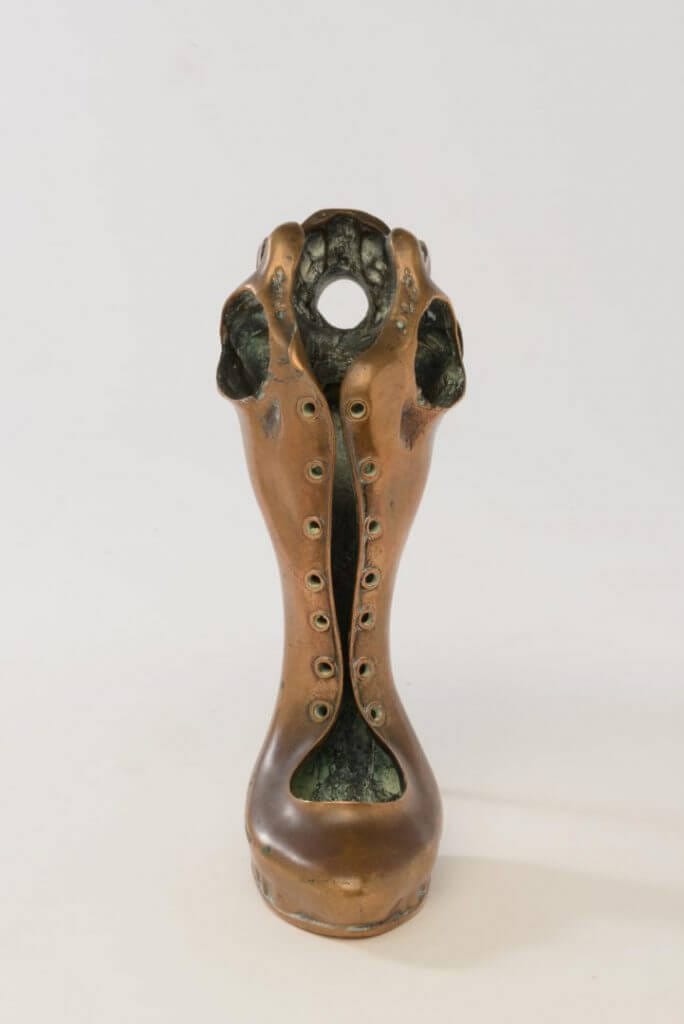
Skull Shoe SCUH (Schadelschuh), 1976(Image 5/6)
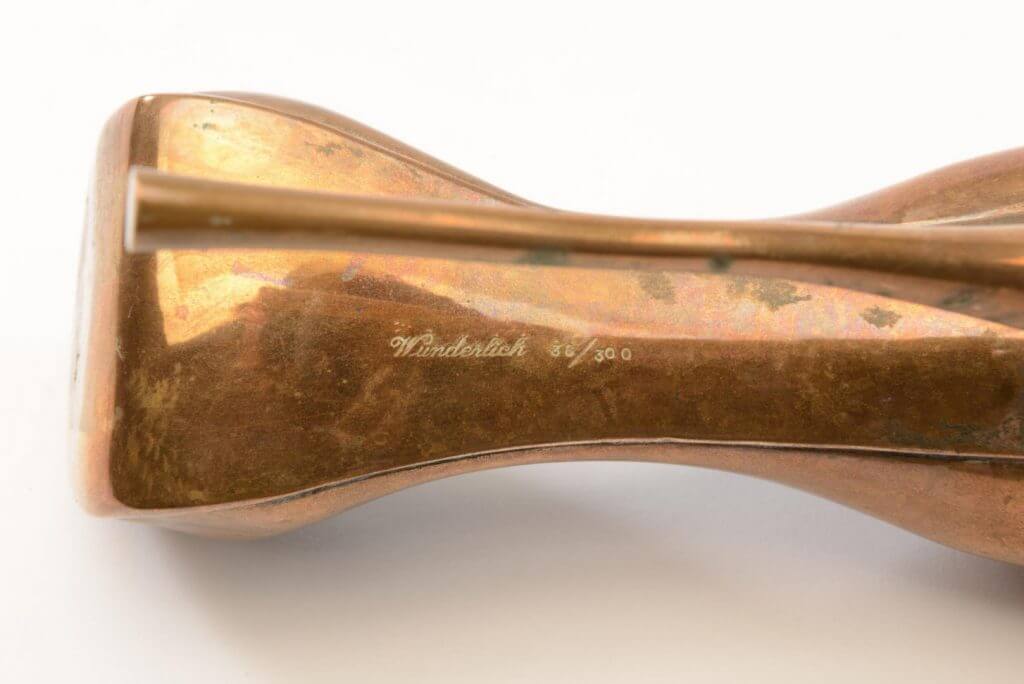
Skull Shoe SCUH (Schadelschuh), 1976(Image 6/6)
Description
This erotic and heavy patinated bronze skull shoe sculpture is numbered and signed. Paul Wunderlich is the German artist whose array of work is quite wide and accomplished. It has a sensuality to it that raised questions and conversation. It is Brutalist yet contemporary…The allusion of the missing laces, the holes in the brain of the heels and interior, the skull like caved interior and the height of the heel itself all leads to intrigue. This is dramatic , theatrical , conversational and art with exaggerated heel heights….
This particular sculpture is scarce.
